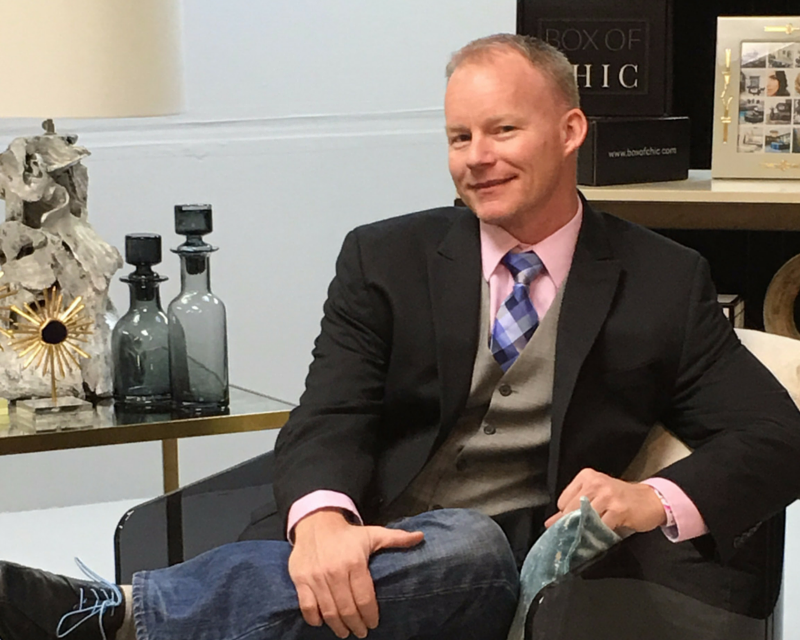If you’re in the field of interior design, then you’ve likely heard of Nick May. He’s the guy behind the mic at The Chaise Lounge podcast.
I’ve written about his podcast here. I was even interviewed by him at the Design Bloggers Conference, HERE.
If you’ve listened to his podcast, you will know that aside from being a charming host, quick with the questions we all want answers to, Nick is a painting contractor with a business in Denver, Colorado, Walls by Design. He has been running his own biz there for many years and brings lots of knowledge and insight into the world of construction. I wanted to pick his brain about some frequently seen problems and questions in the world of painting interiors, and then I had a few questions about his podcast and the road he’s on today.
1. As an experienced painting contractor, what do you see as the biggest decisions homeowners have trouble making when starting a painting project? Selecting color? Finish? Where to stop and start? Maybe which white?
Biggest trouble is finding the right color. We contract with color designers to go out and work with our customers. We used to do it in-house, but that was when we were smaller and I could do them all.
2. While many times people will discount painting as labor that can be a DIY project, what do you think a professional painting contractor can bring to a job? Give me the advantages beyond, obviously, not having to climb ladders and do the back-breaking work. :-)
Most homeowners that want to tackle painting projects just don't have the right equipment, and they typically buy inferior tools that just don't help provide a good end result. I see homeowners using plastic, instead of proper drop cloths, cheap rollers and brushes, and unsafe ladders. Plastic is slippery, and many times too thin. Because of this, homeowners often do not protect the surfaces properly. Cheap rollers and brushes are just harder to work with and don't produce good results. Trying to save money can really hurt the end result. Ladders that are household rated, are easily damaged and can prove to be very unsafe.
The other important difference is that most homeowners do not do the adequate amount of coats. If you are changing color or sheen, you should always apply two coats of paint to ensure proper coverage. Missed spots or light areas can easily happen if one only applies one coat.
3. I now have a clause in my specs that requires the contractor to apply a sample of the color selected, on the wall, ceiling, or even on moulding, if necessary, to get approval from the client prior to purchasing all the paint for the job. Is this something you see often or am I being too careful? BTW, obviously, if this note is in my specs, then the contractor knows to allow for the expense up front. :-)
I have only been requested to do this once, but it was not communicated until after the project was contracted for, so there was a bit of a back and forth on who was going to pay for it. We require color sheets and a project review with all of our customers (designers included), and we often receive push-back on the additional meeting.
4. Name one (or several) best practices you'd like to see more designers incorporate into their dealings with contractors like you, and homeowners.
A solid project review (I mentioned it above) with spec sheets and all project aspect discussed. This is super helpful as often times parts of a project change, little items are not thought of, and finer details are reviewed.
5. One last question on paint: What is the most common paint color you have used in your projects there in CO?
Silver Satin and Simply White, both by Benjamin Moore. 80% of our cabinet projects are going some version of white (and we are currently painting 4 kitchen projects per week).
6. Now, about your highly successful podcast... What made you want to start a podcast that basically helps designers with their businesses?
The long answer was just answered on this week's podcast, but the short version is that I had started hosting live events in Denver to help designers get more business and be better business owners so that I would have the opportunity to paint for more of them. It morphed into podcasting so I could cast a wider net and get more people willing to share their secrets.
It has morphed into pushing me into the spotlight on the national stage and turned into a business on its own.
7. Are there any trends or common threads that you have noticed in the successful designers that you have interviewed?
Three big ones!
One, a lot of the designers that did not go straight to interior design school (like in college) that are successful, come from a background in corporate PR or Advertising. I think this gives them a leg-up because it is one of the hardest things to learn as it is not necessarily something taught in school.
Two, if they go on to school, they get some great experience working for a great design firm and get hands-on experience. Then, go on to open their own firm.
Three, they start with a degree in architecture and then focus on interior design.
8. I love the job board idea you're implementing. How did that idea come about, and have you gotten much feedback on it yet?
I thought it would be helpful because a lot of my guests always talked about hiring JRs and interns, and I was increasingly hearing from design students that I knew would need jobs. I've gotten great feedback from listeners and design firms. It is my hope that more and more students find us as a result of the job board and that listeners will share the resource with peers.
9. Anything you'd like to share that's in the pipeline for you? Speaking engagements, future podcasts, etc.?
Can't quite share it yet (close on the sponsorship deal), but I am hoping to announce soon a designer show house this winter that I will be covering that focuses on mid-century modern.
Tap/hover to Pin this article to Pinterest!
I’m so glad to feature Nick May here today to share some golden tips on painting and the design biz.
I just knew he would bring something for everyone!
Now, do me a favor and have a listen to some of his podcasts. Then, leave a review on iTunes! The reviews really make or break a podcast; they need them to get their podcasts known and heard. Here’s how.
Here are a few more ways to connect with this industry leader: Facebook, Instagram, Twitter.





